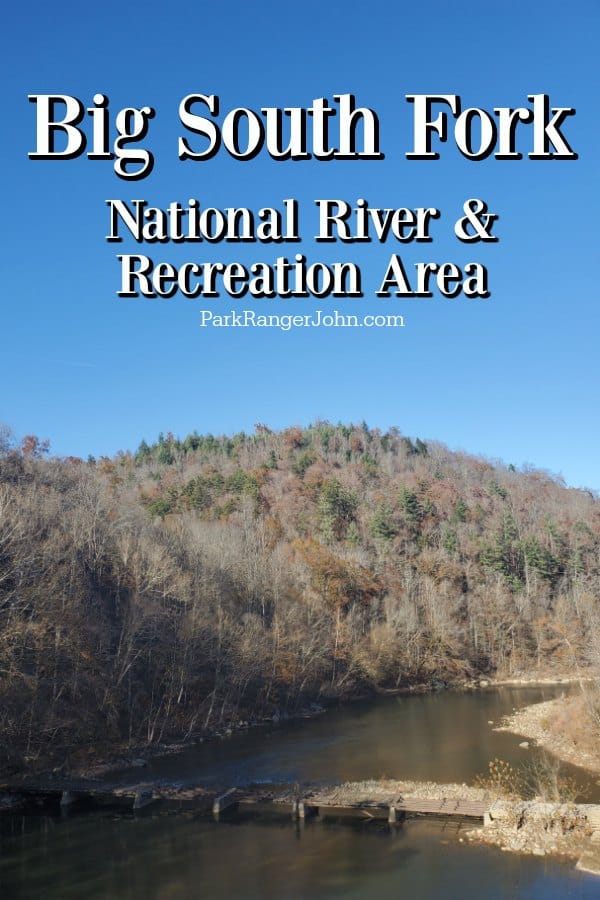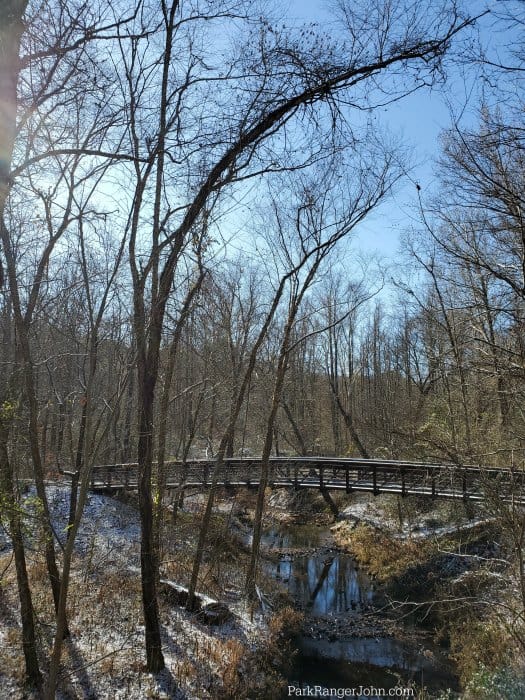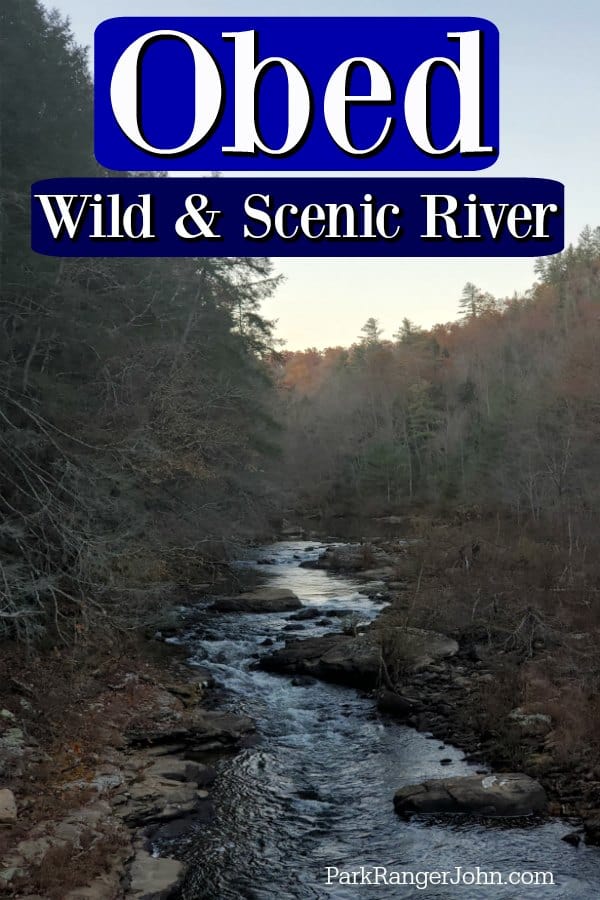Tennessee National Parks include multiple historic sites, battlefields, and military parks. Along with the gorgeous Smoky Mountain National Park which is a must-visit for any park lover. Tons of trails, wildlife, great scenery and more to explore.
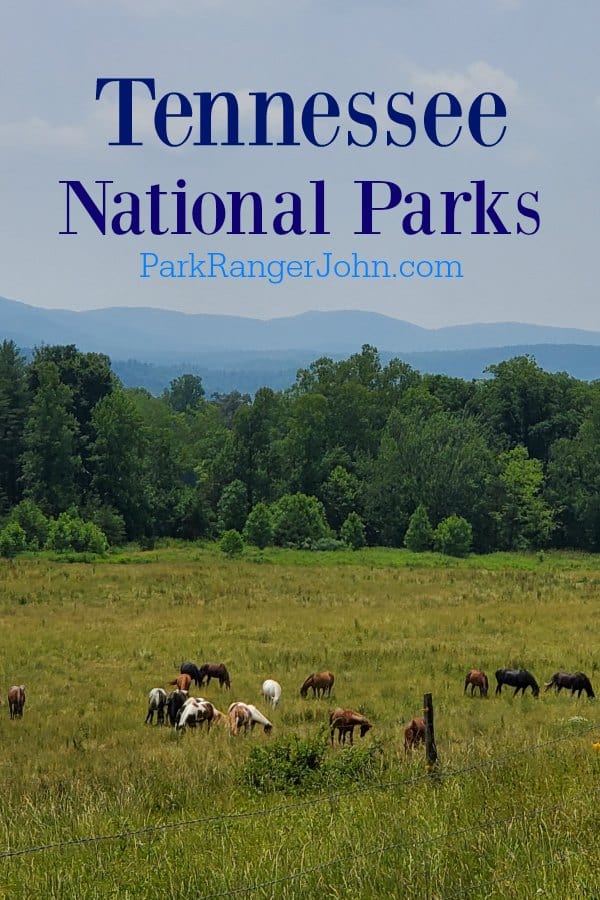
National Parks in Tennessee
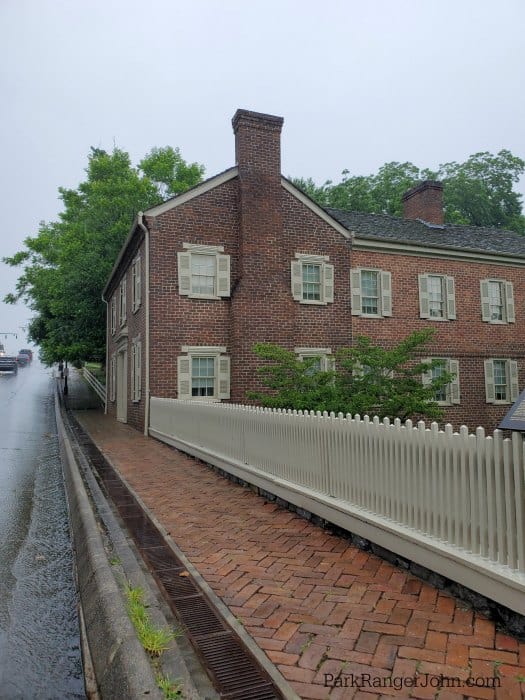
Andrew Johnson National Historic Site
Top Things to do - Explore the Visitor Center, Museum, and Tailor Shop, Explore How it all Began - the Early Home,Feel a Sense of Place - The Homestead,Pay Homage - The Andrew Johnson National Cemetery
Lodging - There are no lodging options within the park. However, there are a variety of places to stay in the area. Hotels, motels, cabins, the historic General Morgan Inn, and bed and breakfasts are available nearby.
Camping - There are no camping within Andrew Johnson National Historic Site
Park Address - 121 Monument Ave., Greeneville, TN, 37743
Andrew Johnson NHS is located in eastern Tennessee approximately 55 miles east of Knoxville. The park is open year-round though winter conditions can affect travel. The park provides the opportunity to see Andrew Johnson's tailor shop and learn more about this life.
Andrew Johnson became president after the assassination of Abraham Lincoln. He had a very interesting political career including being impeached, tried and acquitted on charges of violating the Tenure of the Office Act.
He grew up in Greeneville, Tennessee as a boy and maintained houses in this area for his entire life. Even though he never went to school he became a wealthy businessman.
The National Park site includes the tailor shop that gave Andrew Johnson his start in business, two houses that he lived in with his family, and a visitor center.
Appalachian National Scenic Trail
Top Things to do - Hiking, Thru-Hiking, Nature Exploration, Wildlife Watching, Visit Historic Landmarks such as Laurel Falls Civilian Conservation Corps Camp and Unaka Mountain Overlook
Lodging - You can find hotels and motels in towns near the trail, such as Gatlinburg, Pigeon Forge, and Townsend.
Camping - The Great Smoky Mountains National Park, through which the trail passes, has campgrounds where you can pitch your tent or park your RV.
94 miles of the Appalachian Trail crosses the eastern portion of Tennessee. The trail runs an additional 160 miles along the border of Tennessee and North Carolina. The trail elevation ranges from 1,326 feet to 6,625 feet.
If you plan to do the hike within Great Smoky Mountains National Park you will need to pick up trail permits ahead of time. You will also need Great Smoky Mountain Camping permits.
For more in-depth trail information check out the Appalachian Trail Guide for Tennessee and North Carolina.
Big South Fork National River and Recreation Area
Top Things to do - Camping, Fishing, Hiking Honey Creek Loop Trail, Horseback Riding, Hunting, Mountain Biking, Paddling, Picnicking in the Park, Rock Climbing, Swimming, Discover Waterfalls, Explore Sccenic Overlooks, Enjoy Sunrises or Sunsets
Lodging - There are no motels or rental cabins located within the Big South Fork other than Charit Creek Lodge. Access to the remote lodge is by foot, bike, or horse only. Additionionally, communities surrounding the national park offers a wide choice of accommodations.
Camping - Whether visiting for the recreation or just looking for a place of peace and quiet, Big South Fork National River and Recreation Area has a variety of campgrounds that can accommodate any need. There are five front-country campgrounds in the park with amenities ranging from hot water showers to food storage lockers.
Campgrounds located in TN section of the park are the Bandy Creek Campground and Station Camp Campground.
Park Address - 4564 Leatherwood Road, Oneida, TN 37841
Big South Fork National River and Recreation Area are located in northeastern Tennessee approximately 125 miles northeast of Nashville. The park is open year-round but snow can affect travel. The park offers hiking, canoeing, kayaking, camping and mountain biking.
In 1974 the federal government designated nearly 200 miles of the Big South Fork of the Cumberland River as a protected area. The park includes more than 400 miles of trails along with extensive horseback riding and mountain biking trails. The park encompasses 125,000 acres of the Cumberland Plateau
The Big South Fork River is also an amazing white water rafting river with rapids up to Class IV. The river truly has a wide variety of outdoor recreation opportunities.
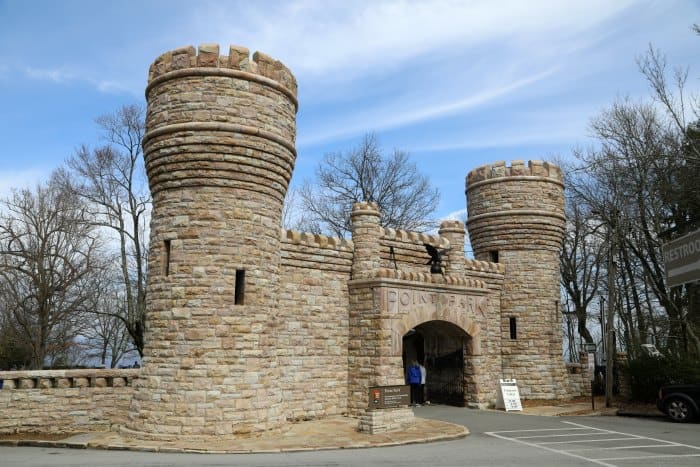
Chickamauga & Chattanooga National Military Park
Top Things to do - Lookout Mountain Battlefield Visitor Center, Hiking and Running, Bicycling, Horseback Riding, Rock Climbing, Paddling and Waterways, Picnicking, Ranger-Guided Outdoor Activities, Self-Guided Tours
Lodging - Chickamauga & Chattanooga National Military Park does not offer lodging within the park itself. However, there are various lodging options available in the surrounding areas, particularly in Chattanooga and Fort Oglethorpe, Georgia.
Camping - Chickamauga & Chattanooga National Military Park itself does not offer camping facilities. However, there are several campgrounds in the surrounding areas where visitors can stay while exploring the park and the region.
Park Address - 3370 Lafayette Road, Fort Oglethorpe 30742
Located in Fort Oglethorpe, Ga., the Chickamauga and Chattanooga National Military Park, is a historic playground for history buffs. The park displays many monuments and exhibits from the Civil War Time. If in the area, be sure to visit the Chickamauga and Lookout Mountain Battlefields.
Be prepared to spend a few hours at minimum exploring these military parks. There are hundreds of monuments and battlefield sites explaining what happened here. The view from Lookout Mountain over the Tennessee and Georgia state line down to the Tennessee River is amazing on a clear day.
Chickamauga and Chattanooga were the first officially established National Military Park in the United States in 1895.
Cumberland Gap National Historical Park
Top Things to do - Visit the Visitor Center, Watch Park Films, Explore the Overlookks, Visit Gap Cave, Tour Hensley Settlement, Hiking, Birdwatching, Sightseeing, Wildlife Viewing, Photography
Lodging - There are no lodging options within the park
Camping - The 154-site Wilderness Road Campground is located approximately 3 miles from the park visitor center off of Highway 58 in Virginia.
Park Address - 91 Bartlett Park Road, Middlesboro 40965
Cumberland Gap NHP is located in Western Virginia along with Tennessee and Kentucky. Cumberland Gap was the first gateway to the west.
The park has over 80 miles of trails, an overlook drive and multiple visitor centers to explore.
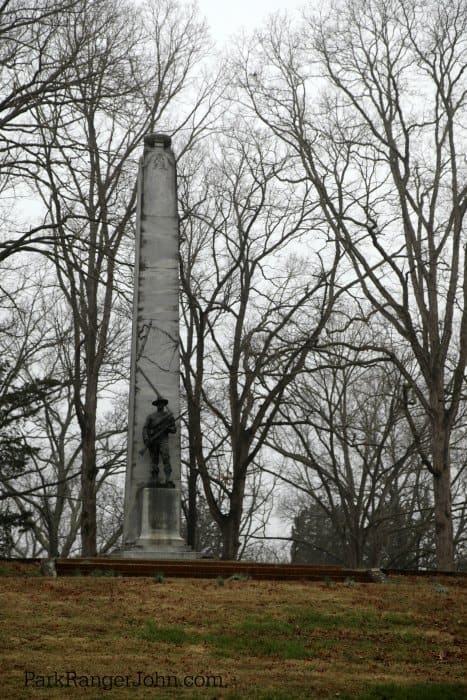
Fort Donelson National Battlefield
Top Things to do - Tour Civil War Fort, Scenic Drive along Battlefield Grounds, Hike the Trails at Fort Donelson NB, Become a Junior Ranger, Stroll through the Fort Donelson National Cemetery, Explore remnants of the Fort, Visit the Visitor Center and Exhibits
Lodging - Fort Donelson National Battlefield in Dover does not have lodging options within the park. However, you can find various lodging choices in Dover, including hotels and motels. Nearby Paris Landing State Park offers a lodge and camping facilities. Vacation rentals, camper and RV sites, and a broader range of accommodations can also be found in Clarksville, which is approximately 30 miles southwest of the park.
Camping - There are no campgrounds within the park. However, there are nearby camping options available in the surrounding areas
Park Address - 174 National Cemetery Drive, PO Box 434, Dover, TN 37058
Fort Donelson National Battlefield is located in north-central Tennessee approximately 80 miles northwest of Nashville. The park is open year-round and offers the opportunity to take a driving tour of the battlefield.
Fort Donelson was the site of the first significant Union victory in the Civil war in 1862. Brigadier General Ulysses S. Grant assisted by Flag Officer Andrew H. Foote captured Fort Henry on the Tennessee River.
They then moved eastward to attack Fort Donelson on the Cumberland River. The Union forces met a greater resistance due to Fort Donelson having better defenses. The Confederates hearing that the Union troops had more troops on their way decided to escape to the southeast. Confusion and indecision led the troops to withdraw behind their previous battle lines.
Confederate Brigadier General Simon Buckner realized that their position was hopeless. He asked General Grant for terms of surrender. Grant responded with "No terms except an unconditional and immediate surrender can be accepted."
12,000 Confederate troops were taken prisoner. The news of the victory spread and caused a widespread celebration. The Union continued on to take over the city of Nashville which became a strategic spot for Union activities.

Great Smoky Mountains National Park
Top Things to do - Touring Cades Cove, Wildflowers Viewing, Picnicking, Wildlife Viewing, Bicycling, Hiking, Fishing, See the Waterfalls, Horseback Riding, Explore Historic Buildings, AutoTouring
Lodging - Nearby towns such as Gatlinburg, Pigeon Forge, Sevierville, and Townsend provide a wide range of choices, including hotels, cabins, chalets, resorts, and campgrounds.
Camping - Great Smoky Mountains National Park offers several campgrounds for visitors looking to enjoy the natural beauty of the park. These campgrounds, including Cades Cove, Elkmont, Smokemont, Abrams Creek, Cosby, Big Creek, and Look Rock, cater to both tent and RV campers, with varying levels of amenities and scenery.
Park Address - 107 Park Headquarters Road, Gatlinburg, TN 37738
Great Smoky Mountains National Park is the most visited National Park in the country. The park is located in eastern Tennessee and western North Carolina. Open year-round the park offers epic wildlife viewing including Black Bears, historical buildings and so much more.
It is hard to describe the Great Smoky Mountains NP in only a couple of paragraphs. There is a reason the park is visited by over 11 million people a year. There is truly something for everyone within the park.
Cades Cove offers an amazing one-way autoroute that passes historical structures and has a high concentration of black bears. The entire park is filled with amazing biodiversity.
The Great Smoky Mountains span the southern Appalachian Mountains. It is estimated there may be more than 50,000 species of plants and animals within the park. There are more than 800 miles of trails that can be explored and help visitors get away from the crowds.
Manhattan Project National Historical Park
Top Things to do - Start with Oak Ridge Visitor Center, Join a Ranger Program, Tour Behind the Fence, Explore Museums, Hike the Hills and Valleys of East TN, Enjoy The Oak Ridge Community Swimming Pool, Paddling, Picnicking, Exploring A.K. Bissell Park
Lodging - The Manhattan Project National Historical Park in Oak Ridge, Tennessee, does not offer on-site lodging options, but there are various accommodations available in and around the city. Oak Ridge itself has hotels and motels for visitors, with options like the DoubleTree by Hilton Hotel and Comfort Inn. Nearby Knoxville offers a broader range of lodging choices and is a convenient option, being a short drive away.
Camping - Camping options near the Manhattan Project National Historical Park in Oak Ridge, Tennessee, are somewhat limited but available. Solway Campground, located in the Oak Ridge area, provides RV and tent campsites for convenient access to the historical park.
Park Address - 61 W. Outer Drive, Oak Ridge, TN 37830
Manhattan Project NHP is located in Oak Ridge, Tennessee along with Los Alamos, New Mexico, and Hanford, Washington. The park tells the story of the creation of the atomic bomb, which helped end World War II.
In Oak Ridge, Tennessee visitors can learn about Clinton Engineer Works, which became the Oak Ridge Reservation, which was the administrative and military headquarters for the Manhattan Project.
The Oak Ridge site includes
- X-10 Graphite Reactor National Historic Landmark, a pilot nuclear reactor which produced small quantities of plutonium;
- Buildings 9731 and 9204-3 at the Y-12 complex, home to the electromagnetic separation process for uranium enrichment;
- K-25 Building site, where gaseous diffusion uranium enrichment technology was pioneered. Buildings 9731, 9204-3 and K-25 together enriched a portion of the material for the uranium bomb.
In order to see the site's visitors need to be on a bus tour. Oak Ridge Reservation bus tour is included in the price of admission to the American Museum of Science and Energy
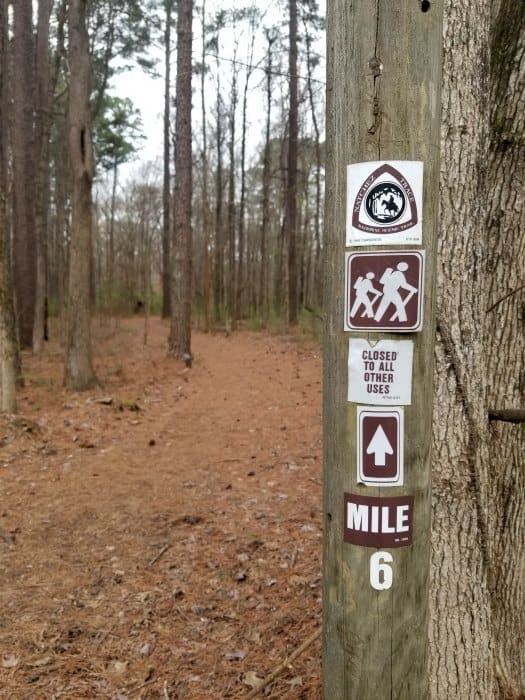
Natchez Trace National Scenic Trail
Top Things to do - Hiking the Highland Rim Section of the Natchez Trace National Scenic Trail, Horseback Riding, Wildlife Viewing, Scenic Driving, Picnicking
Lodging -In the Tennessee section of the Natchez Trace National Scenic Trail, you'll find diverse lodging options. Nashville boasts a wide range of accommodations, including hotels and vacation rentals, while Franklin offers historic inns and charming bed and breakfasts. Leiper's Fork is known for its unique cabins and guesthouses, and Hohenwald provides various lodging choices, including hotels.
Camping - There are campgrounds along the Natchez Trace Parkway in Tennessee, such as the Meriwether Lewis Campground and the Fall Hollow Campground. These are great options if you prefer camping and want to stay close to the trail.
Park Address - 2680 Natchez Trace Parkway, Tupelo 38804
The Natchez Trace National Trail includes four sections in Mississippi and one in Tennessee. The trail includes 67-miles of trails.
This scenic trail offers you the opportunity to hike or horseback ride trails similar to the first travelers of the Trace. There are a total of five unconnected segments that run parallel to the Natchez Trace Parkway.
Obed Wild and Scenic River
Top Things to do - Birdwatchin, Boulder Climbing, Hiking, Paddling, Rock Climbing, Ranger Led Activities, Visit the Obed Wild and Scenic River Visitor Center,
Lodging - The Obed Wild and Scenic River in Tennessee does not have lodging options within the park. You can find lodging in nearby towns such as Wartburg, Crossville, Harriman, and Oak Ridge.
Camping- Rock Creek Campground is located near the Obed Wild and Scenic River Visitor Center in Wartburg. It has 11 sites with picnic tables, fire rings, and lantern posts. There are also vault toilets, drinking water, and trash cans available.
Park Address - 208 N. Maiden Street, Wartburg 37887
Obed Wild and Scenic River is located in east-central Tennessee approximately 45 miles northwest of Knoxville. The park is open year-round offering the opportunity to experience white water paddling, hiking, and rock climbing.
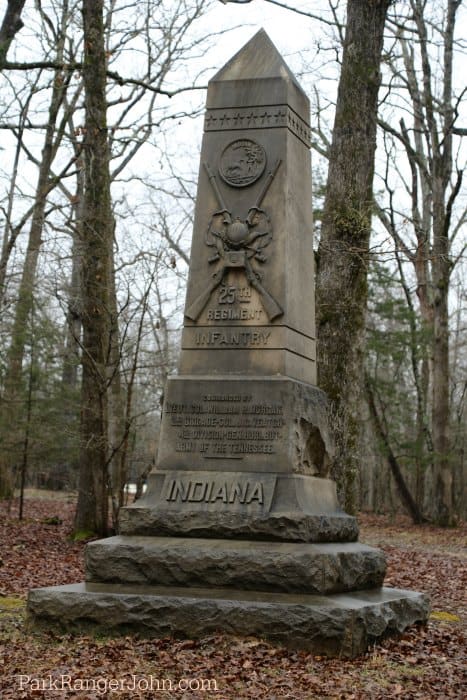
Shiloh National Military Park
Top Things to do - Bicycling, Hiking, E-Bicycling, Walking and Running, Visit the Shiloh National Cemetery, Self-Guided Auto Driving Tour, Wildlife Viewing, Tour the Corinth Contraband Camp - Birthplace of Freedom, Explore the Site of Battery Robinett, Visit the Site of Davis Bridge Battlefield, Attend a Ranger Program
Lodging - There are no National Park lodges within the park
Camping - There are no camping options within the park
Park Address - 1055 Pittsburg Landing Road, Shiloh 38376
Shiloh NMP is located in southwestern Tennessee and northeastern Mississippi. The park is open year-round offering a 12.7-mile auto tour route that has 20 interpretive stops.
In 1862 during the Civil War, Union forces moved forward to attack a railroad crossing at Corinth, Mississippi. On their way south the Union forces stopped at a log church called Shiloh Meeting House near Pittsburg Landing, Tennessee.
Confederate forces marched north to engage the Union forces in battle. The rail crossing was so vital that around 100,000 soldiers battled here between April 6-7, 1862. The initial battle ended with no clear winner.
The Confederate troops withdrew south to Corinth and faced off with a larger Union force. The Confederate troops soon abandoned the railroad crossing to the Union forces.
On October 3-4, 1862, Confederate forces tried to recapture Corinth in a battle that resulted in 7,000 casualties.

Stones River National Battlefield
Top Things to do - Bicycling, Filming Activities, Interpretive Programs, Still Photography, Walking/Hiking/Jogging, Ranger Programs, Living History Programs, Hallowed Ground, Visit the Stones River National Cemetery, Picnicking, Explore the Battlefield
Lodging - While the park itself doesn't have lodging, there are numerous lodging options in nearby Murfreesboro, including hotels, vacation rentals, bed and breakfasts, campgrounds, and extended stay accommodations.
Camping - Stones River National Battlefield in Murfreesboro, Tennessee, does not provide camping options within the park. However, there are nearby campgrounds and camping facilities, such as Barfield Crescent Park Campground in Murfreesboro, KOA Campground in Nashville.
Park Address - 1563 North Thompson Lane, Murfreesboro 37129
Stone River National Battlefield is located in central Tennessee approximately 25 miles southeast of Nashville. The park is open year-round and offers the opportunity to tour the Battle of Stones River battlefield.
On December 26, 1862, Union forces left Nashville to attack Confederate troops that were camped at Murfreesboro. The Battle at Stones River between December 31 to January 2, 1862, was one of the bloodiest battles of the Civil War.
23,500 soldiers were killed during the battle. This was the highest percentage of casualties of the Civil War. The battle ended with the Confederate troop withdrawing from Murfreesboro.
Today you can take an auto tour around the battlefield site and visit the visitor center. There are 7-miles of trails that connect to additional city trails.
List of National Parks in Tennessee
- Andrew Johnson National Historic Site
- Appalachian National Scenic Trail (Georgia to Maine)
- Big South Fork National River and Recreation Area (also Kentucky)
- Chickamauga & Chattanooga National Military Park (GA, TN)
- Cumberland Gap National Historical Park (KY, TN, VA)
- Fort Donelson National Battlefield (also Kentucky)
- Great Smoky Mountains National Park (also North Carolina)
- Manhattan Project National Historical Park (TN, WA, NM)
- Natchez Trace National Scenic Trail (AL, MS, TN)
- Obed Wild and Scenic River
- Shiloh National Military Park (also Mississippi)
- Stones River National Battlefield
Affiliated Areas
- Overmountain Victory National Historic Trail (NC, SC, TN, VA)
- Tennessee Civil War National Heritage Area
- Trail of Tears National Historic Trail (AL, AR, GA, IL, KY, MO, NC, OK, TN)
There are 12 National Parks in Tennessee receiving over 9.2 million visitors a year. These visitors produce over $664 million in economic benefits from tourism.
Tennessee National Parks include 1 National Heritage Area, 1 Wild and Scenic River managed by the National Park Service, 4 National Trails, and 2.085 National Register of Historic Places Listings.
National Parks in Tennessee also includes 30 National Historic Landmarks, 13 National Natural Landmarks, 1 World Heritage Site (check out this list of all of the UNESCO World Heritage Sites in the United States), and 424 places recorded by the Heritage Documentation Programs.
There is also over 3.2 million objects in the Tennessee National Park Museum Collections, and 1,589 archeological sites.
Learn more about National Park Passes for parks that have an entrance fee.
$80.00 - For the America the Beautiful/National Park Pass. The pass covers entrance fees to all US National Park Sites and over 2,000 Federal Recreation Fee Sites for an entire year and covers everyone in the car for per-vehicle sites and up to 4 adults for per-person sites.
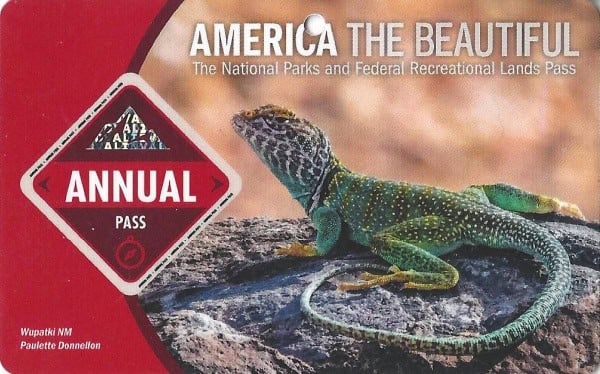
Buy your pass at this link, and REI will donate 10% of pass proceeds to the National Forest Foundation, National Park Foundation, and the U.S. Endowment for Forestry & Communities.
National Park Free Entrance Days -Mark your calendars with the five free entrance days the National Park Service offers annually.

For a fun adventure check out Escape Campervans. These campervans have built in beds, kitchen area with refrigerators, and more. You can have them fully set up with kitchen supplies, bedding, and other fun extras. They are painted with epic designs you can't miss!
Escape Campervans has offices in Vancouver, Seattle, Portland, San Francisco, Las Vegas, Los Angeles, Phoenix, Salt Lake City, Denver, New York, and Orlando
National Parks in neighboring states
National Parks in North Carolina
Do you know how many National Parks you have visited? Check out this list of US National Parks in Alphabetical Order to check them off.
Make sure to follow Park Ranger John on Facebook, Instagram, Pinterest, and TikTok

